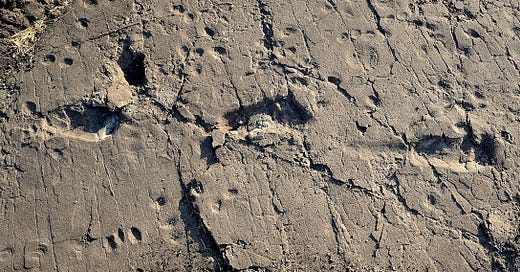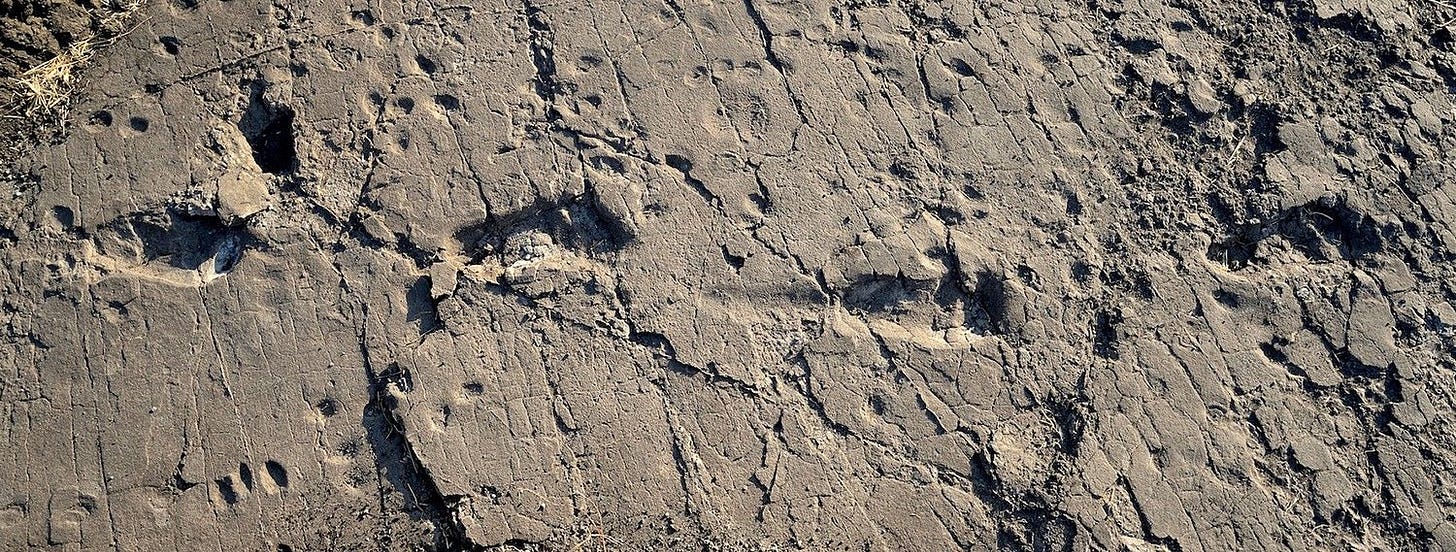New footprints from Laetoli shed light on how the science has changed in 40 years
New trails expand our knowledge of body size and behavior of some of the earliest known bipedal hominins.
I’m jazzed this morning because eLife has published a paper by Fidelis Masao and colleagues describing new footprint trails from the famous site of Laetoli, Tanzania: “New footprints from Laetoli (Tanzania) provide evidence for marked body size variation in early hominins”.
The scientific theme of the paper is about body size and dimorphism. The species presumed to have made all the trackways is Australopithecus afarensis, the only species that has so far been reported from fossil remains at Laetoli, although the tracks at 3.66 million years old are a bit more ancient than any of the fossils. This is the same species as the Lucy skeleton, which was found at Hadar, Ethiopia, and the “First Family” series of fossils from Hadar in the locality known as A.L. 333. In 2010, Yohannes Haile-Selassie and colleagues reported a partial skeleton from Woranso-Mille, Ethiopia, some 3.6 million years old, which also seems to represent a large male individual, that stood just under 160 cm tall. Based on a regression of foot size to stature, the new footprint trail in test pit L8 represents an individual that probably stood around 165 cm, with 10 cm or so error either way.
Here’s a neat graphic showing stature estimates for early hominins up through early H. erectus:

That’s a bit complicated but the point is pretty clear. A. afarensis overlaps with H. erectus substantially in stature. If we consider only the tiny Lucy skeleton (the lowest “x” in the figure at less than 110 cm), we get a misleading view of body size in this early hominin species. But at the same time, Lucy and some other specimens of A. afarensis really are quite a lot smaller than any H. erectus specimens. The conclusion made by Masao and colleagues, applying some statistics, is that A. afarensis was more variable and sexually dimorphic than humans and H. erectus.
This idea of higher dimorphism in early hominins has been the subject of pointed debate over the past fifteen years, a debate that has been driven by insufficient fossil data. One group of authors has, through the use of increasingly complicated statistical games, tried to show that a tiny sample of fossils are not really as variable as they look to the eye.
These new data don’t revolutionize the question, they just move the ball downfield slightly. Adding a few more data points, even very large individuals, doesn’t vastly narrow the confidence limits on second- and higher moments of a size distribution. But what these footprints should remind us is that discovering new fossils is a lot more valuable than statistical games. With that in mind, I think we should also be skeptical about whether these footprints were really produced by A. afarensis. That species already has problems at Hadar and at Woranso-Mille, where some researchers now recognize multiple species are present. At Laetoli, we should probably apply a level of skepticism to the idea that only one fossil species could be present.
As I was reading this new paper, what struck me was that the authors had some difficulty being certain that the new footprints represent the same “Footprint Tuff” in which the older track G hominin footprints were found back in the 1970s. They found that the original scientists involved in describing the footprints, including Tim White, Mary Leakey, and Richard Hay, had been very thorough in describing the footprints themselves and some aspects of the geological setting. But those original descriptions just did not present sufficient detail about some geological aspects essential to recognizing the geological layers in the field setting. There were no published photographs of the stratigraphic sequence, for example, and no description of the color or “eye-scale characteristics” of the tuffs. Without such details, it is difficult to do replicable work on new aspects of the geology. That is, the level of detail sufficient to publish fossils in the 1980s does not meet the basic needs of scientists today. We need better descriptions of the context of fossils, and we need to know when those fossils are really in situ like these footprints.
We have come a long way in understanding aspects of microstratigraphy and taphonomy, and we have come to demand greater contextual detail in addition to the basic description of fossils. You can see that shift manifested in this paper by Masao and colleagues, which includes clear field descriptions of all the geological units they encountered.

What we demand in descriptions today is also much more detailed than forty years ago. Then, it was sufficient to publish line drawings of footprints, with a few topographic views. But even then, researchers recognized that publications didn’t provide all the detail that was necessary to really evaluate the science. So they made casts available to allow other researchers to compare the evidence.
Today, we can make three-dimensional models available instantly. So in addition to the different modes of visualization used in the research paper, Masao and colleagues have placed research-grade models of the footprint trails on Morphosource for anyone to download. That’s the same mechanism we used to distribute 3D surface models of the Homo naledi discovery, and it is great to see more and more scientists taking advantage of the opportunity to increase the replicability and quality of their science in this way.
It’s just really exciting to see researchers around the world engaging with new discoveries like this, getting them out to the public in open access journals, and building the global support for our science.
References
Masao F, Ichumbaki EB, Cherin M, Barili A, Boschian G, Iurino DA, Menconero S, Moggi-Cecchi J, Manzi G. 2016. New footprints from Laetoli (Tanzania) provide evidence for marked body size variation in early hominins. eLife 2016;5:e19568. doi:10.7554/eLife.19568
Jungers WL. 2016. Paleontology: These feet were made for walking. eLife2016;5:e22886. doi:10.7554/eLife.22886
Haile-Selassie, Y., Latimer, B. M., Alene, M., Deino, A. L., Gibert, L., Melillo, S. M., … & Lovejoy, C. O. (2010). An early Australopithecus afarensis postcranium from Woranso-Mille, Ethiopia. Proceedings of the National Academy of Sciences, 107(27), 12121–12126.




